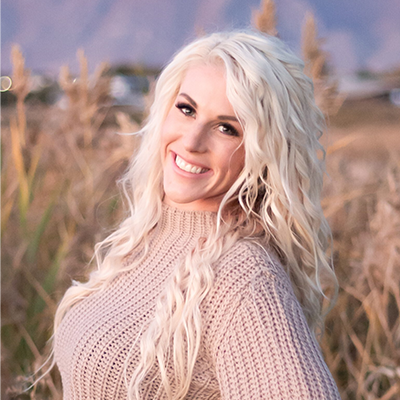The Significance of Cattle Vaccination
A well-thought-out and executed cattle vaccination plan is essential to maintaining a healthy herd and healthy finances. Not only are healthy cattle more productive, but it’s also less costly to prevent disease than it is to treat it when it occurs. In this article, we’ll discuss the factors that you’ll consider when building your herd's vaccination plan and provide a basic list of vaccines to incorporate into your schedule.
Advantages of a Well-Structured Vaccination Program
A well-structured vaccination program not only safeguards the health of individual animals but also contributes to overall herd health. Vaccinated cattle are less likely to spread disease among each other, and they are more resistant to potential diseases that can be brought into your operation via stock trailers, dirty boots, or your neighbor's cows finding their way into your pastures.
Considerations for Developing a Vaccination Plan:
Age and Health Status of the Herd
Your herd's average age and health status are among the first factors to take into account when developing your cattle vaccination plan. Calves, yearlings, adult cows, and pregnant cows all have different susceptibility levels and requirements. We’ll explore the specific vaccination to consider for each group later on in the article.
Prevalent Diseases in the Region
Speak with your veterinarian to understand the diseases prevalent in your region; this is key to developing an effective vaccination strategy. This knowledge allows you to prioritize vaccines that protect against locally common illnesses known to spread among cattle in your region.
Type of Cattle Operation (Rangeland Beef, Dairy, Feedlot)
Different cattle operations may expose animals to varying stressors and environments. Consider the specific needs of your operation – whether it's beef, dairy, or a feedlot – to address your specific risks effectively.
Availability of Veterinary Resources
Many ranchers can develop a vaccination plan without the oversight of a veterinary professional. Still, if you’re new to the game, or looking to re-evaluate your process to address common issues within your herd, it’s a good idea to reach out to your vet for professional guidance. A working relationship with your veterinarian is invaluable in creating a vaccination plan tailored to your herd's unique requirements.
Recommended Vaccines for Cattle:
Below, I’ll list the vaccines that are commonly incorporated into cattle vaccination plans across the country. Keep in mind, that I pulled this list directly from my Beef Cattle Production and Management class notes taken during my time at Penn State (thanks, Dr. Kniffen), and may not be all-inclusive for your specific area. As mentioned earlier, it’s good to familiarize yourself with the preventable diseases that are prevalent in your region when tailoring your vaccination schedule to your herd.
Core Vaccines:
i. Bovine Viral Diarrhea (BVD)
ii. Bovine Respiratory Syncytial Virus (BRSV)
iii. Leptospirosis
iv. Clostridium chauvei
v. Clostridium septicum
vi. Clostridium tetani
Optional Vaccines:
i. Bovine herpesvirus type 1 (BHV-1)
ii. Bovine herpesvirus type 5 (BHV-5)
iii. Parainfluenza virus (PI3)
iv. Infectious bovine rhinotracheitis (IBR)
v. Haemophilus somnus
vi. Pasteurella multocida
Vaccination Plan for Cattle:
Calves:
i. BVD
ii. BRSV
iii. Leptospirosis
iv. Clostridium chauvei
v. Clostridium septicum
vi. Clostridium tetani
Yearlings:
i. BVD
ii. BRSV
iii. Leptospirosis
iv. BHV-1
v. PI3
vi. IBR
Adult Cows:
i. BVD
ii. Leptospirosis
iii. BHV-1
iv. IBR
Pregnant Cows Pre-calving
i. Rotavirus
ii. Corona virus
iii. K99 E. Coli
iv. C.perfringens type C & D
Vaccination Administration:
Proper Handling and Restraint Techniques
Adopt proper handling and restraint techniques to ensure the safety of both the cattle and the administering personnel. Read our blog post on the benefits of low-stress handling to brush up on some specific techniques.
Aseptic Vaccination Techniques
Maintain aseptic conditions during vaccination to prevent infections and ensure the efficacy of the vaccines. Don’t use the same needle for more than one animal, ensure your syringes are sterile, and do not let mixed MLV vaccines sit for too long before injecting – they will be rendered ineffective.
Recordkeeping of Vaccination Dates and Doses
Keep detailed records of vaccination dates and doses to track the health history of individual animals and facilitate timely revaccination.
Monitoring and Evaluating Vaccination Effectiveness:
Observing Herd Health and Disease Incidence
Regularly monitor herd health and disease incidence to identify any anomalies promptly. This is also where great record-keeping comes into play. You’ll be able to quickly identify if one of your animals has been vaccinated against a disease that they’ve contracted.
Conducting Serologic Testing to Measure Antibody Levels
If possible, consider serologic testing to measure antibody levels, providing insight into the effectiveness of the vaccination program. This may be worth considering if your herd experiences frequent disease outbreaks, despite your vaccination plan.
Consulting with a Veterinarian to Assess the Need for Revaccination
Regular consultations with a veterinarian, at least once per year, should be part of your routine for assessing the need for revaccination and adjusting your vaccination plan as necessary.
Conclusion
In conclusion, a well-designed cattle vaccination program is fundamental to maintaining herd health and preventing disease. By considering individual herd characteristics, staying informed about prevalent diseases, and working closely with a veterinarian, you can ensure the longevity and productivity of your cattle operation.

.jpg)



.webp)




